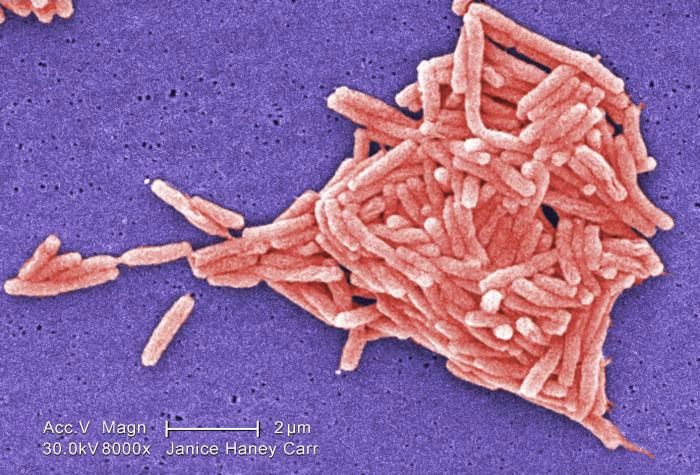NY Legionnaires' Outbreak Highlights Nationwide Rise

A large outbreak of Legionnaires' disease in New York City has put the illness in the spotlight in recent weeks, but experts say the illness needs more attention in general, as cases have increased nationwide over the last decade.
Since the outbreak was first reported, on July 10, 86 people in the South Bronx have been sickened with Legionnaires' disease, including seven who have died. The disease is a type of pneumonia caused by the bacteria Legionella, which live in watery environments. Officials suspect that five Bronx water-cooling towers, which tested positive for Legionella, are the cause of the current outbreak.
But only a small portion of Legionnaires' disease cases in the United States are tied to outbreaks — the rest are individual cases that pop up sporadically — and the number of cases has been on the rise across the country in recent years. Over the last decade, the number of cases of Legionnaires' disease reported to U.S. public health officials tripled, from 1,127 cases in 2000 to 4,548 cases in 2013, according to a paper published in the September/October issue of the Journal of Public Health Management & Practice.
It's not likely this increase is simply the result of better diagnosis and reporting of cases, said Dr. Ruth Berkelman, director of the Center for Public Health Preparedness and Research at Emory University in Atlanta. Berkelman noted that there have not been changes in diagnosis strategies in recent years, and the test for Legionnaires' disease came out over a decade ago.
"The increase is probably real," and the number of cases will likely continue to rise without consistent prevention strategies, Berkelman said. "More attention is needed for this disease. It's been a relatively low public health priority, but it's one of the leading causes of pneumonia." [5 Things You Should Know About Legionnaires' Disease]
There are many possible reasons for the increase, including a growing population of older adults, who are at higher risk for contracting the disease from contaminated water sources (the disease does not spread from person to person).
Some adults in the baby boomer generation, who are in their 50s and 60s, also travel a lot, and travel is associated with the disease, with cases occurring in hotels and on cruise ships, Berkelman said.
Sign up for the Live Science daily newsletter now
Get the world’s most fascinating discoveries delivered straight to your inbox.
In addition, a greater number of people now take drugs that suppress their immune systems, for conditions such as cancer, and having a weakened immune system also puts people at risk of catching Legionnaires' disease, Berkelman said.
There are also now more man-made water structures, such as cooling towers and indoor fountains, than there were several decades ago, and these increase people's risk of exposure to Legionella, and could contribute to the rise in cases, Berkelman said.
To prevent Legionnaires' disease, water systems should be maintained according to standards, particularly those in hotels and health care facilities, Berkelman said. Regular testing for the pathogen, and rules that hold building owners responsible for water system maintenance, should also be considered, she said.
There should also be more research on the disease so that health officials can better understand which methods work best to prevent cases, Berkelman said.
Follow Rachael Rettner @RachaelRettner. Follow Live Science @livescience, Facebook & Google+. Original article on Live Science.

Rachael is a Live Science contributor, and was a former channel editor and senior writer for Live Science between 2010 and 2022. She has a master's degree in journalism from New York University's Science, Health and Environmental Reporting Program. She also holds a B.S. in molecular biology and an M.S. in biology from the University of California, San Diego. Her work has appeared in Scienceline, The Washington Post and Scientific American.











